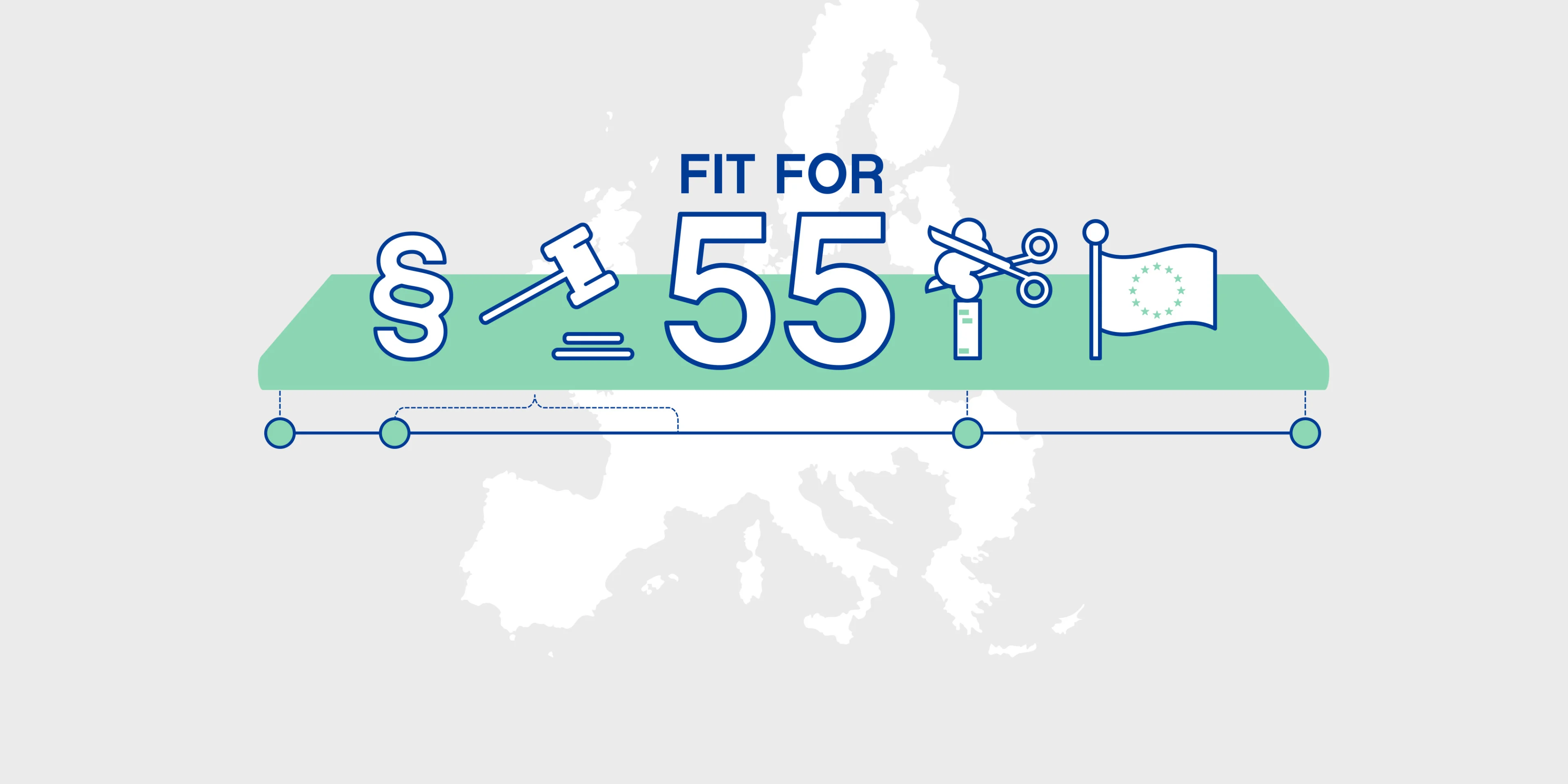
Sustainability
4 minute read
EU’s Fit for 55 – what you need to know
As part of the European Union’s Green Deal initiative, a major legislative overhaul called ‘Fit-for-55’ was launched in summer 2021. This is big news as these pieces of legislation - whose core aim is to reduce emissions in the EU by at least 55% by 2030 - will have a direct impact on how Europeans live and do business. While the legislative process is set to take some time, as a business it is essential to start preparing yourself now – so here are the key things you need to know to get you started.
What is Fit for 55?
Fit for 55 comes against the backdrop of the Paris Agreement, which set out a global objective of reaching carbon neutrality by 2050. In order to achieve this, greenhouse gas emissions will need to drop substantially in the coming decades. The EU’s target of cutting emissions by at least 55% by 2030 is intended as a key milestone on that journey.
The legislative changes brought about by the Fit for 55 package will have a broad impact ranging from how everyday household items are made, to how we travel and ship goods.
Head of EU Affairs at Neste, a leading producer of renewable fuels, Samuel Maubanc puts it in a nutshell: “The name of the game with the Fit for 55 package is to boost the use of renewable energy and to promote energy efficiency measures, to reduce energy consumption in all human activities.”
A top priority: decarbonizing transportation
One of the big challenges being addressed by Fit for 55 is decarbonizing transportation – this will be a key area to look out for as new legislation will emerge around electric vehicles and renewable fuels or biofuels.
While electrification will be one of the top drivers to achieve this, Maubanc points out that “electro-mobility is not necessarily feasible in all transport modes and all segments, or at least not at the same pace – this is for various reasons be they economic, practical or technical. Two obvious examples of these areas that will be more difficult to electrify are heavy duty vehicles and aviation. So waste and residue-based biofuels will do a large part of the decarbonization heavy-lifting, especially in these transportation segments.”
Biofuels, which are a drop-in solution that do not require heavy investment or engine modifications, will also enable the decarbonization of existing fleets of vehicles which currently run on fossil fuels, some of which will remain on the roads for decades to come.
“Mobility is a vector of socialization and effectively a human basic need. It’s also a key component of economic activity. That is why we are happy to see that within the package the essential nature of mobility - and the fact that it should not be restricted - is clearly recognized,” Maubanc says.
When will Fit for 55 come into effect?
The typical EU legislative process generally takes between 18 to 24 months to be completed. Then on top of that comes an additional period of time during which member states transpose this EU legislation into national laws.
But while it may take a long time for the legal process to run its course, businesses should already be taking note and preparing to adapt, as practical changes are likely to start happening in anticipation across the EU sooner.
For instance, one piece of legislation called ReFuel Aviation will establish an obligation to use sustainable aviation fuels. This piece of legislation is still being debated, but what we can see on the market is that the ramp up of SAF is already materializing.
High level of ambition
To achieve the core objectives of the Fit for 55 package, the EU will need to use and make good use of all the sustainable solutions that are at hand. The high level of ambition cannot be compromised, and this needs to be reflected in a varied set of legislation that unleash the potential of renewable fuels as a key instrument to reduce the European transport sector’s dependence on fossil fuels.
“In a world today marred by uncertainty and instability, the Fit for 55 package needs to remain on the right track and deliver on its main promises – this is something that at Neste we will support as much as we can,” says Maubanc.
Credits: Irja Howie, UK-based journalist and communications expert.
